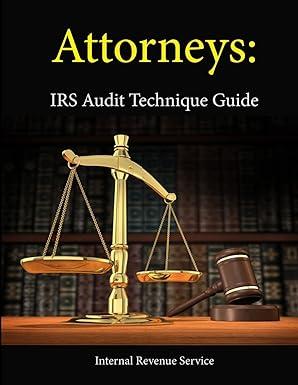Question
1. Entries for Issuing Bonds and Amortizing Discount by Straight-Line Method On the first day of its fiscal year, Chin Company issued $26,100,000 of five-year,
1. Entries for Issuing Bonds and Amortizing Discount by Straight-Line Method
On the first day of its fiscal year, Chin Company issued $26,100,000 of five-year, 4% bonds to finance its operations of producing and selling home improvement products. Interest is payable semiannually. The bonds were issued at a market (effective) interest rate of 5%, resulting in Chin Company receiving cash of $24,957,895.
a. Journalize the entries to record the following:
- Issuance of the bonds.
- First semiannual interest payment. The bond discount amortization, using the straight-line method, is combined with the semiannual interest payment. (Round your answer to the nearest dollar.)
- Second semiannual interest payment. The bond discount amortization, using the straight-line method, is combined with the semiannual interest payment. (Round your answer to the nearest dollar.)
For a compound transaction, if an amount box does not require an entry, leave it blank. Round your answers to the nearest dollar.
b. Determine the amount of the bond interest expense for the first year. $ c. Why was the company able to issue the bonds for only $24,957,895 rather than for the face amount of $26,100,000?
The market rate of interest is the contract rate of interest.
2. Entries for Issuing Bonds and Amortizing Premium by Straight-Line Method
Daan Corporation wholesales repair products to equipment manufacturers. On April 1, 2016, Daan Corporation issued $3,400,000 of 5-year, 7% bonds at a market (effective) interest rate of 6%, receiving cash of $3,545,014. Interest is payable semiannually on April 1 and October 1.
b. Journalize the entry to record the first interest payment on October 1, 2016, and amortization of bond premium for six months, using the straight-line method. The bond premium amortization is combined with the semiannual interest payment. (Round to the nearest dollar.) For a compound transaction, if an amount box does not require an entry, leave it blank.
| Interest Expense | |||
| Premium on Bonds Payable | |||
| Cash | 119000 |
3. Entries for Bonds Payable and Installment Note Transactions
The following transactions were completed by Montague Inc., whose fiscal year is the calendar year:
| Year 1 | |
| July 1. | Issued $2,350,000 of five-year, 11% callable bonds dated July 1, Year 1, at a market (effective) rate of 12%, receiving cash of $2,263,520. Interest is payable semiannually on December 31 and June 30. |
| Oct. 1. | Borrowed $360,000 by issuing a 10-year, 6% installment note to Intexicon Bank. The note requires annual payments of $48,912, with the first payment occurring on September 30, Year 2. |
| Dec. 31. | Accrued $5,400 of interest on the installment note. The interest is payable on the date of the next installment note payment. |
| Dec. 31. | Paid the semiannual interest on the bonds. The bond discount amortization of $8,648 is combined with the semiannual interest payment. |
| Year 2 | |
| June 30. | Paid the semiannual interest on the bonds. The bond discount amortization of $8,648 is combined with the semiannual interest payment. |
| Sept. 30. | Paid the annual payment on the note, which consisted of interest of $21,600 and principal of $27,312. |
| Dec. 31. | Accrued $4,990 of interest on the installment note. The interest is payable on the date of the next installment note payment. |
| Dec. 31. | Paid the semiannual interest on the bonds. The bond discount amortization of $8,648 is combined with the semiannual interest payment. |
| Year 3 | |
| June 30. | Recorded the redemption of the bonds, which were called at 98. The balance in the bond discount account is $51,888 after payment of interest and amortization of discount have been recorded. (Record the redemption only.) |
| Sept. 30. | Paid the second annual payment on the note, which consisted of interest of $19,961 and principal of $28,951. |
Required:
1. Journalize the entries to record the foregoing transactions. For compound transactions, if an amount box does not require an entry, leave it blank or enter "0". When required, round your answers to the nearest dollar.
| Date | Account | Debit | Credit |
|---|---|---|---|
| Year 1 | |||
| July 1 | |||
| Oct. 1 | |||
| Dec. 31-Note | |||
| Dec. 31-Bond | |||
| Year 2 | |||
| June 30 | |||
| Sept. 30 | |||
| Dec. 31-Note | |||
| Dec. 31-Bond | |||
| Year 3 | |||
| June 30 | |||
| Sept. 30 | |||
2. Indicate the amount of the interest expense in (a) Year 1 and (b) Year 2.
a. Year 1 $ b. Year 2 $
3. Determine the carrying amount of the bonds as of December 31, Year 2. $
Step by Step Solution
There are 3 Steps involved in it
Step: 1

Get Instant Access to Expert-Tailored Solutions
See step-by-step solutions with expert insights and AI powered tools for academic success
Step: 2

Step: 3

Ace Your Homework with AI
Get the answers you need in no time with our AI-driven, step-by-step assistance
Get Started


